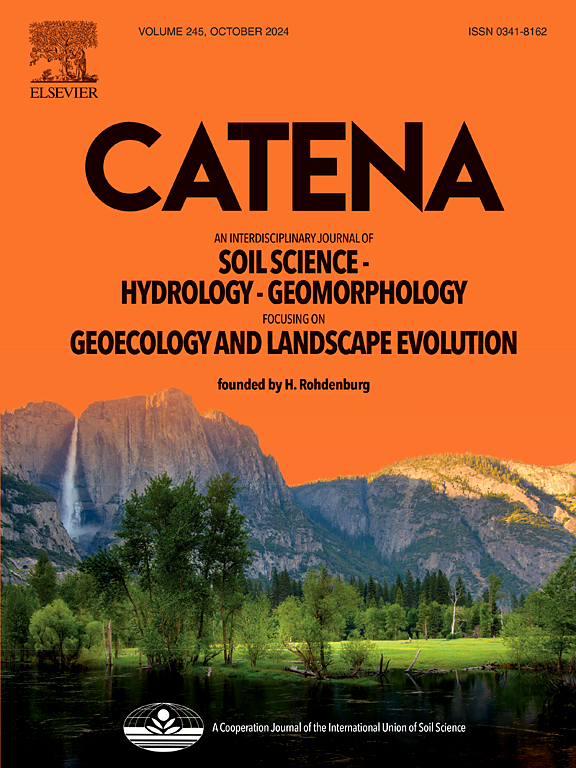Spatial variation in sediment connectivity of small watershed along a regional transect on the Loess Plateau
Sediment connectivity likely varies greatly over space, which further affects the processes of hydrology, erosion and sediment delivery of watershed. Small watershed is the basic geomorphologic unit for soil and water conservation. Few studies have been performed to quantify the spatial variation in sediment connectivity of small watershed at regional transect. Six typical small watersheds distributed from south to north on the Loess Plateau were selected as a regional transect to investigate the spatial variation in sediment connectivity and its influencing factors. In this study, the widely utilized index of connectivity (IC) was used to investigate the spatial variation of sediment connectivity in small watersheds. The source-sink landscape index reflecting the source or sink effect of landscape pattern on soil erosion process was utilized to compute the weights for IC. The redundancy analysis (RDA) was applied to identify the main influencing factors contributing to the spatial variation in IC. The results showed that IC increased from south to north (ranged from-2.02 to 1.76). A significant positive spatial autocorrelation was detected in IC of small watershed on the Loess Plateau (p < 0.05). The relationships between IC and environmental factors differed between different small watersheds. The results of RDA showed that the contributions of different influencing factors varied along the tested transect. The relative contributions of climate factors and vegetation factors to IC declined whereas that of land surface factors raised with latitude. Vegetation and climate were the main factors controlling the spatial variation in IC. The results are helpful to understand the spatial heterogeneity of soil erosion and evaluate the conservation benefit of vegetation restoration in semi-arid region.
相关推荐
- Annual soil erosion characteristics of unpaved roads in the Loess Plateau hilly and gully region, China [2022-10-01]
- Correlations between plant and soil for their C, N, P contents and stoichiometry on the steep gully slopes [2022-10-01]
- Shear strength of soil-root system under different vegetation restoration modes on the Loess Plateau of China [2022-10-01]
- Variation in shear strength of soil-root system under five typical land use types on the Loess Plateau of China [2022-10-01]
- Assessment of the gully erosion susceptibility using three hybrid models in one small watershed on the Loess Plateau [2022-10-01]



